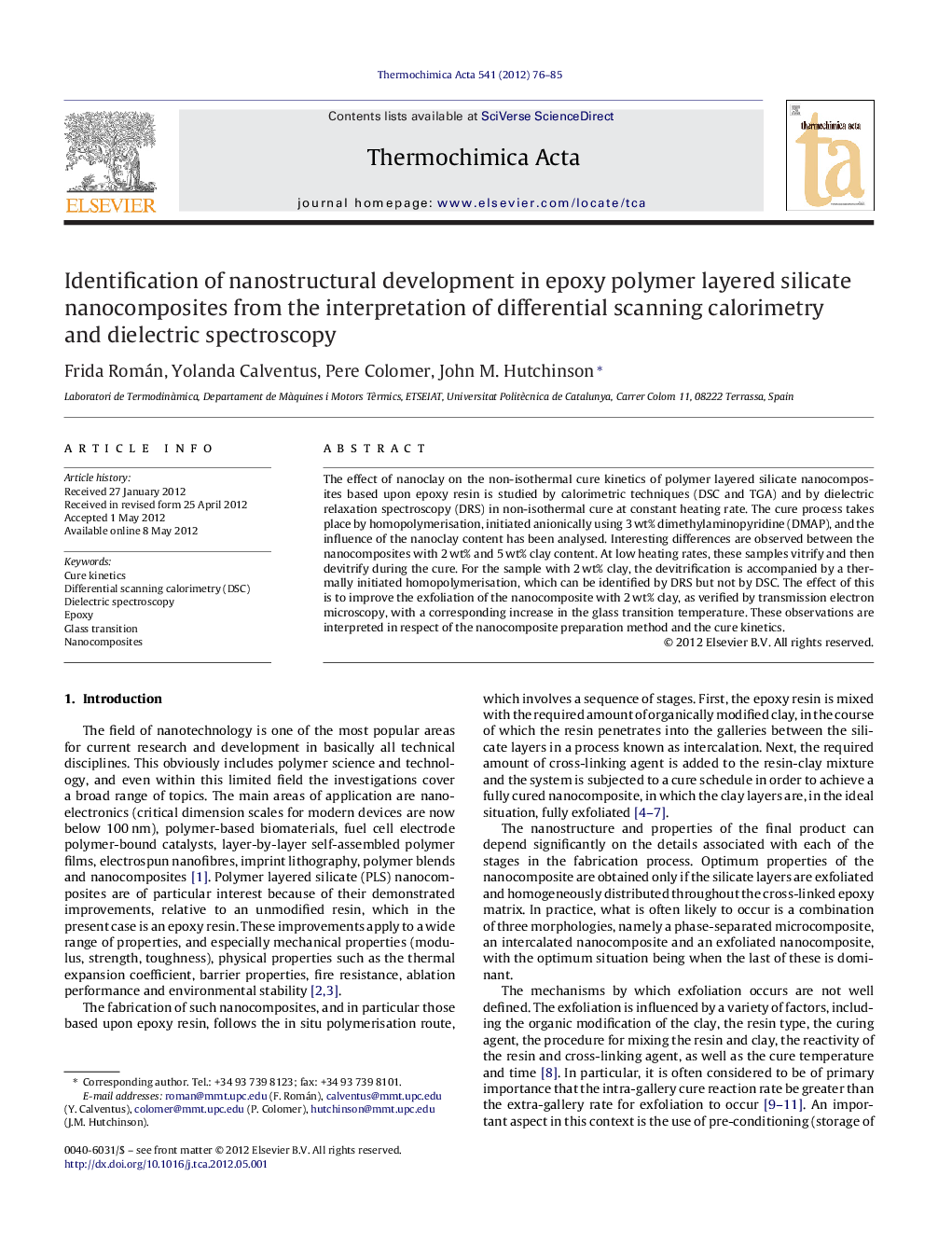| کد مقاله | کد نشریه | سال انتشار | مقاله انگلیسی | نسخه تمام متن |
|---|---|---|---|---|
| 674135 | 1459543 | 2012 | 10 صفحه PDF | دانلود رایگان |

The effect of nanoclay on the non-isothermal cure kinetics of polymer layered silicate nanocomposites based upon epoxy resin is studied by calorimetric techniques (DSC and TGA) and by dielectric relaxation spectroscopy (DRS) in non-isothermal cure at constant heating rate. The cure process takes place by homopolymerisation, initiated anionically using 3 wt% dimethylaminopyridine (DMAP), and the influence of the nanoclay content has been analysed. Interesting differences are observed between the nanocomposites with 2 wt% and 5 wt% clay content. At low heating rates, these samples vitrify and then devitrify during the cure. For the sample with 2 wt% clay, the devitrification is accompanied by a thermally initiated homopolymerisation, which can be identified by DRS but not by DSC. The effect of this is to improve the exfoliation of the nanocomposite with 2 wt% clay, as verified by transmission electron microscopy, with a corresponding increase in the glass transition temperature. These observations are interpreted in respect of the nanocomposite preparation method and the cure kinetics.
► Comparison of DSC and DRS in the cure of epoxy nanocomposites.
► Dependence of exfoliation of nanocomposite on clay content.
► Anionically initiated homopolymerisation in PLS nanocomposites.
Journal: Thermochimica Acta - Volume 541, 10 August 2012, Pages 76–85